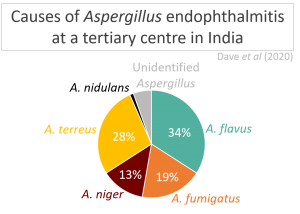Submitted by HLeSueur on 20 November 2015
 “Inserting two oxygen atoms into a substance brings health benefits in drugs that fight disease”
“Inserting two oxygen atoms into a substance brings health benefits in drugs that fight disease”
A number of medicines, such as those used to fight malaria, bacterial infections and cancer require a chemical reaction with oxygen to work. This chemical reaction occurs naturally in some plants, for example, in Artemisia Annua from which we obtain the anti-malarial drug Artemisinin. Though the benefits are widely known, the chemical mechanism, unfortunately, is not. Scientists do not fully understand how it works, or how to recreate it in a lab. Zhang, Liu and colleagues however, may be on the path to discovery. They found that a protein in the common mould species Aspergillus fumigatus adds a pair of oxygen atoms to a toxin that the mould produces. The enzyme FtmOx1 produces a highly reactive free radical that helps put the oxygen atoms in the right place.
The protein in Aspergillus fumigatus is part of a larger family of proteins that are also found in the human body. Common diseases such as diabetes, cancer and rheumatoid arthritis can occur when these similar enzymes in the body are either over- or under-active. The researchers suspect that these related enzymes perform the same oxidative reactions as in the mould. If this is the case, then understanding the mechanism may enable researchers to develop chemical molecules to help restore function when those enzymes are no working properly.
This work could potentially offer improvements in the condition of people living with many illnesses and may even contribute to the development of new classes of antimicrobial (and antifungal) drugs, drugs that will be sorely needed in the future.
News archives
-
Title
Date


